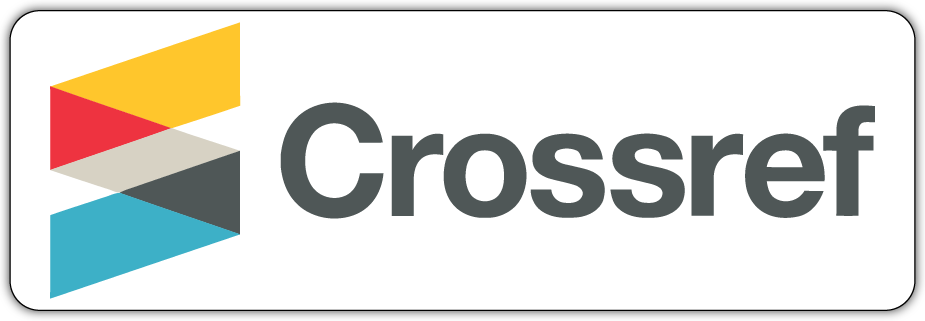Factors Influencing Online Impulse Buying Behavior: Evidence from Shopee Live
DOI:
https://doi.org/10.12928/commicast.v6i1.12926Keywords:
Online Impulse Buying, E-commerce, Shopee Live, SEM (Structural Equation Modelling, Purposive SamplingAbstract
This study aims to investigate the factors that influence online impulse buying behavior among Indonesian consumers on the Shopee Live e-commerce platform. With the advent of digital technology, shopping behavior has shifted significantly towards online platforms, particularly through innovative features such as live streaming. Utilizing a purposive sampling technique, data was collected from Shopee users through a Google Forms and analyzed using Structural Equation Modeling (SEM). The research findings revealed that factors such as time pressure, quantity pressure, and social influence did not significantly influence enjoyment leading to the absence of impulse buying online. Whereas the results of economic benefits, visual elements and sound elements on enjoyment were highly significant which played an important role in driving impulse purchase decisions. This suggests that consumers are more attracted to tangible economic benefits such as discounts and attractive visual and sound ornament presentations during live streaming sessions. The study concludes that enhancing these key visual and economic factors can effectively increase impulse buying behavior, offering valuable insights for retailers and marketers looking to optimize their strategies in a live commerce environment.
References
Adam, M. T. P., Krämer, J., & Müller, M. B. (2015). Auction Fever! How Time Pressure and Social Competition Affect Bidders’ Arousal and Bids in Retail Auctions. Journal of Retailing, 91(3), 468–485. https://doi.org/10.1016/j.jretai.2015.01.003
Afif, M., & Purwanto, P. (2020). Pengaruh Motivasi Belanja Hedonis, Gaya Hidup Berbelanja dan Promosi Penjualan terhadap Pembelian Impulsif pada Konsumen Shopee ID. JAMIN : Jurnal Aplikasi Manajemen Dan Inovasi Bisnis, 2(2), 34. https://doi.org/10.47201/jamin.v2i2.51
Al Hakim, R., Mustika, I., & Yuliani, W. (2021). Validitas Dan Reliabilitas Angket Motivasi Berprestasi. Fokus (Kajian Bimbingan & Konseling Dalam Pendidikan), 4(4), 263. https://doi.org/10.22460/fokus.v4i4.7249
Almasyhari, A. K., Sukesti, F., Priatnasari, Y., & Fauziah, I. G. (2024). Edukasi Masyarakat Dalam Mengenali Impulsive Buying Di Era Digital Ekonomi. Jurnal Abdikaryasakti. https://www.e-journal.trisakti.ac.id/index.php/abdisakti/article/view/20170
Amalia, P., & Firmialy, S. D. (2024). How does the Theory of Planned Behavior Mediate The Relationship Between Financial Literacy And Impulse Buying on Live Selling Platforms? Asia Pacific Management and Business Application, 12(3), 251–268. https://doi.org/10.21776/ub.apmba.2024.012.03.2
Chiu, T. P. (2022). The integrated study of cross-cultural differences in visual merchandising design and consumer’s visual perception on e-commerce platform. International Conference on Human-Computer Interaction. https://doi.org/10.1007/978-3-031-06038-0_25
Daroch, B., Nagrath, G., & Gupta, A. (2021). A study on factors limiting online shopping behaviour of consumers. Rajagiri Management Journal, 15(1), 39–52. https://doi.org/10.1108/RAMJ-07-2020-0038
Faizza, T. D., & Roostika, R. (2024). The Role of Product Information Quality and Streamer Credibility in Building Trust and Purchase Intention. Petra International Journal of Business Studies, 7(2), 185–192. https://doi.org/10.9744/petraijbs.7.2.185-192
Fatimah, F., & Adinugraha, H. H. (2024). Analysis of E-Commerce System at Shopee Indonesia Company Using Strengths, Weaknesses, Opportunities, and Threats. Journal of Education and Computer Applications, 1(1), 32–38. https://doi.org/10.69693/jeca.v1i1.5
Gasimov, I., Ismayilov, M., Azizov, M., & Gasimov, I. (2024). An Analysis of Factors Affecting the Online Shopping Behavior of Consumers: Evidence From Azerbaijan. International Conference on Problems of Logistics, Management and and Operation in the East-West Transport Corridor (PLMO). https://ieeexplore.ieee.org/abstract/document/10887170/
Guo, Y., Goh, K. Y., Zhang, Y., Liu, X., & Gao, B. (2021). Visual merchandising and selling orientations in E-commerce live streaming: Evidence from Taobao Live. aisel.aisnet.org. https://aisel.aisnet.org/icis2021/gen_topics/gen_topics/5/
Haji-Othman, Y., & Yusuff, M. S. S. (2022). Assessing Reliability and Validity of Attitude Construct Using Partial Least Squares Structural Equation Modeling (PLS-SEM). International Journal of Academic Research in Business and Social Sciences, 12(5). https://doi.org/10.6007/IJARBSS/v12-i5/13289
Jr, J. F. H. (2014). Multivariate Data Analysis Joseph F. Hair Jr. William C. Black Seventh Edition, Pearson.
Jr, J. F. H., Hult, G. T. M., Ringle, C. M., Sarstedt, M., Danks, N. P., & Ray, S. (2021). Partial least squares structural equation modeling (PLS-SEM) using R: A workbook. library.oapen.org. https://library.oapen.org/handle/20.500.12657/51463
Junior, J. F. H., Hult, G. T. M., Ringle, C. M., & Sarstedt, M. (2014). A primer on partial least squares structural equation modeling (PLS-SEM). In Los Angeles: SA.
Kinasih, M. P., & Wuryandari, N. E. R. (2023). Pengaruh Price Discount, Product Knowledge, Dan Time Pressure Terhadap Impulse Buying Pada Fitur Shopee Live. Jurnal Ilmiah Multidisiplin, 2(05), 88–101. https://doi.org/10.56127/jukim.v2i05.940
Li, G., Jiang, Y., & Chang, L. (2022). The Influence Mechanism of Interaction Quality in Live Streaming Shopping on Consumers’ Impulsive Purchase Intention. Frontiers in Psychology, 13. https://doi.org/10.3389/fpsyg.2022.918196
Li, L., & Kang, K. (2023). Discovering online Chinese consumers’ impulse buying in live streaming by the theory of planned behavior. Journal of Economic Analysis. https://opus.lib.uts.edu.au/handle/10453/171807
Liu, C.-W., Hsieh, A.-Y., Lo, S.-K., & Hwang, Y. (2017). What consumers see when time is running out: Consumers’ browsing behaviors on online shopping websites when under time pressure. Computers in Human Behavior, 70, 391–397. https://doi.org/10.1016/j.chb.2016.12.065
Makmor, N., Hafiz, K. A., Anuar, A., & Sofian, F. (2024). Impact of para-social interaction on impulsive buying through live-streaming shopping website. Environment and Social Psychology, 9(5). https://doi.org/10.54517/esp.v9i5.2089
Ngo, T. T. A., Nguyen, H. L. T., Nguyen, H. P., Mai, H. T. A., Mai, T. H. T., & Hoang, P. L. (2024). A comprehensive study on factors influencing online impulse buying behavior: Evidence from Shopee video platform. Heliyon, 10(15), e35743. https://doi.org/10.1016/j.heliyon.2024.e35743
Nugroho, A. S., & Mawardi, M. (2021). Pengembangan Instrumen Penilaian Sikap Tanggungjawab dalam Pembelajaran Tematik di Sekolah Dasar. Jurnal Basicedu, 5(2), 808–817. https://doi.org/10.31004/basicedu.v5i2.825
Nuryani, S., Pattiwael, W. P., & Iqbal, M. (2022). Analisis Faktor-faktor yang Mempengaruhi Pembelian Impulsif pada Pengguna Aplikasi Tiktokshop. Ekonomis: Journal of Economics and Business, 6(2), 444. https://doi.org/10.33087/ekonomis.v6i2.567
Pranggabayu, B., & Lestari Andjarwati, A. (2022). Pengaruh Hedonic Shopping Motivation Dan Store Atmsophere Terhadap Impulsive Buying (Studi Pada Pengunjung Miniso Tunjungan Plaza). SIBATIK JOURNAL: Jurnal Ilmiah Bidang Sosial, Ekonomi, Budaya, Teknologi, Dan Pendidikan, 1(6), 951–966. https://doi.org/10.54443/sibatik.v1i6.112
Pujiastuti, N., Reza, R., & Astuti, R. F. (2022). Pengaruh literasi ekonomi dan lingkungan sosial terhadap perilaku pembelian impulsif pada mahasiswa. Jurnal Riset Pendidikan Ekonomi, 7(1), 107–117. https://doi.org/10.21067/jrpe.v7i1.6710
Qu, Y., Cieślik, A., Fang, S., & Qing, Y. (2023). The role of online interaction in user stickiness of social commerce: The shopping value perspective. In Digital Business. Elsevier. https://www.sciencedirect.com/science/article/pii/S2666954423000091
Qu, Y., Khan, J., Su, Y., Tong, J., & Zhao, S. (2023). Impulse buying tendency in live-stream commerce: The role of viewing frequency and anticipated emotions influencing scarcity-induced purchase decision. In Journal of Retailing and Consumer Services. Elsevier. https://www.sciencedirect.com/science/article/pii/S0969698923002850
Rook, D. W., & Fisher, R. J. (1995). Normative Influences on Impulsive Buying Behavior. Journal of Consumer Research, 22(3), 305. https://doi.org/10.1086/209452
Roostika, R., Marsasi, E. G., & Astuti, B. (2024). Live Streaming Adoption for Small Medium Businesses to Support the Achievement Of SDG’s. Journal of Lifestyle and SDGs Review, 4(4), e02516. https://doi.org/10.47172/2965-730X.SDGsReview.v4.n04.pe02516
Sarstedt, M., Ringle, C. M., & Hair, J. F. (2021). Partial least squares structural equation modeling. Handbook of Market Research. https://doi.org/10.1007/978-3-319-57413-4_15
Seber, V. (2018). The Effect of Interaction Via Social Media and Past Online Shopping Experience on Repurchase Intention Through Trust in Tokopedia Application Users in Surabaya. Research In Management and Accounting (RIMA). http://jurnal.wima.ac.id/index.php/RIMA/article/view/2595/0
Silitonga, S., Nasution, W. F., Tinggi, S., Manajemen, I., & Medan, S. (2024). Pengaruh Fitur Live Dan Harga Terhadap Keputusan Pembelian Produk Pada Pelanggan E-Commerce Shopee. Jurnal Ekonomi Manajemen Dan Bisnis, 1(6), 347–353. https://doi.org/10.62017/jemb
Simamora, L., Fadhilah, M. S., Andika, D., Gunawan, M., & Mihardja, E. J. (2024). Transcendental Communication with Near Death Experience. 5(3), 36–50. https://doi.org/10.12928/commicast.v5i3.11171
Verhagen, T., & van Dolen, W. (2011). The influence of online store beliefs on consumer online impulse buying: A model and empirical application. Information & Management, 48(8), 320–327. https://doi.org/10.1016/j.im.2011.08.001
Wei, W., Prasetyo, Y. T., Belmonte, Z. J. A., Cahigas, M. M. L., Nadlifatin, R., & Gumasing, M. J. J. (2025). Applying the technology acceptance model – Theory of planned behavior (TAM-TPB) model to study the acceptance of building information modeling (BIM) in green building in China. Acta Psychologica, 254, 104790. https://doi.org/10.1016/j.actpsy.2025.104790
Xu, X., Wu, J. H., & Li, Q. (2020). What drives consumer shopping behavior in live streaming commerce? In Journal of electronic commerce research. ojs.jecr.org. http://ojs.jecr.org/jecr/sites/default/files/2020vol21no3_Paper1.pdf

Downloads
Published
How to Cite
Issue
Section
License
Copyright (c) 2025 Zahra Syakhira Iswan, Ratna Roostika

This work is licensed under a Creative Commons Attribution-ShareAlike 4.0 International License.
License and Copyright Agreement
In submitting the manuscript to the journal, the authors certify that:
- They are authorized by their co-authors to enter into these arrangements.
- The work described has not been formally published before, except in the form of an abstract or as part of a published lecture, review, thesis, or overlay journal. Please also carefully read Commicast's Posting Your Article Policy at http://journal2.uad.ac.id/index.php/commicast/about/editorialPolicies#custom-5
- That it is not under consideration for publication elsewhere,
- That its publication has been approved by all the author(s) and by the responsible authorities – tacitly or explicitly – of the institutes where the work has been carried out.
- They secure the right to reproduce any material that has already been published or copyrighted elsewhere.
- They agree to the following license and copyright agreement.
Copyright
Authors who publish with Commicast agree to the following terms:
- Authors retain copyright and grant the journal right of first publication with the work simultaneously licensed under a Creative Commons Attribution License (CC BY-SA 4.0) that allows others to share the work with an acknowledgment of the work's authorship and initial publication in this journal.Â
- Authors are able to enter into separate, additional contractual arrangements for the non-exclusive distribution of the journal's published version of the work (e.g., post it to an institutional repository or publish it in a book), with an acknowledgment of its initial publication in this journal.
- Authors are permitted and encouraged to post their work online (e.g., in institutional repositories or on their website) prior to and during the submission process, as it can lead to productive exchanges, as well as earlier and greater citation of published work.
Licensing for Data Publication
Commicast use a variety of waivers and licenses, that are specifically designed for and appropriate for the treatment of data:
Open Data Commons Attribution License, http://www.opendatacommons.org/licenses/by/1.0/ (default)
Creative Commons CC-Zero Waiver, http://creativecommons.org/publicdomain/zero/1.0/
Open Data Commons Public Domain Dedication and Licence, http://www.opendatacommons.org/licenses/pddl/1-0/
Other data publishing licenses may be allowed as exceptions (subject to approval by the editor on a case-by-case basis) and should be justified with a written statement from the author, which will be published with the article.
Open Data and Software Publishing and Sharing
The journal strives to maximize the replicability of the research published in it. Authors are thus required to share all data, code or protocols underlying the research reported in their articles. Exceptions are permitted but have to be justified in a written public statement accompanying the article.
Datasets and software should be deposited and permanently archived inappropriate, trusted, general, or domain-specific repositories (please consult http://service.re3data.org and/or software repositories such as GitHub, GitLab, Bioinformatics.org, or equivalent). The associated persistent identifiers (e.g. DOI, or others) of the dataset(s) must be included in the data or software resources section of the article. Reference(s) to datasets and software should also be included in the reference list of the article with DOIs (where available). Where no domain-specific data repository exists, authors should deposit their datasets in a general repository such as ZENODO, Dryad, Dataverse, or others.
Small data may also be published as data files or packages supplementary to a research article, however, the authors should prefer in all cases a deposition in data repositories.






















